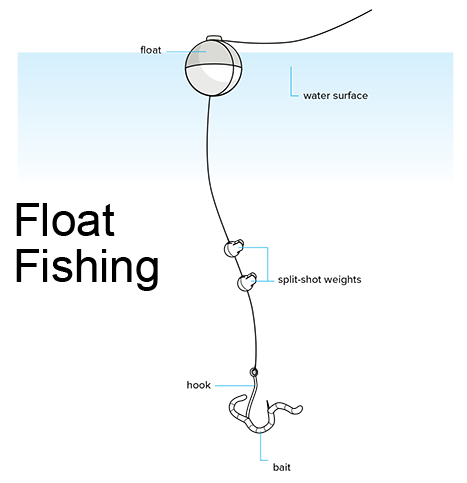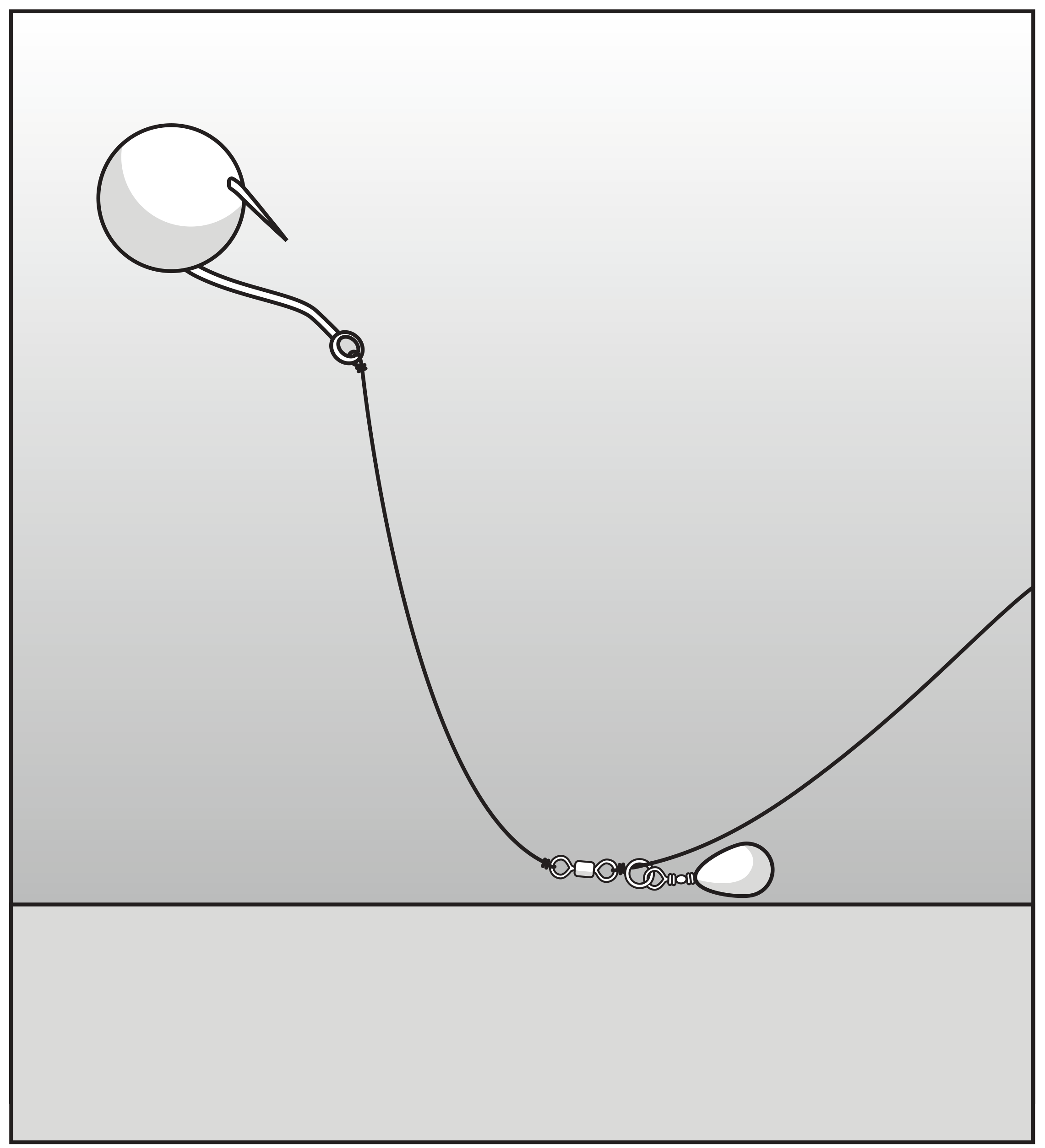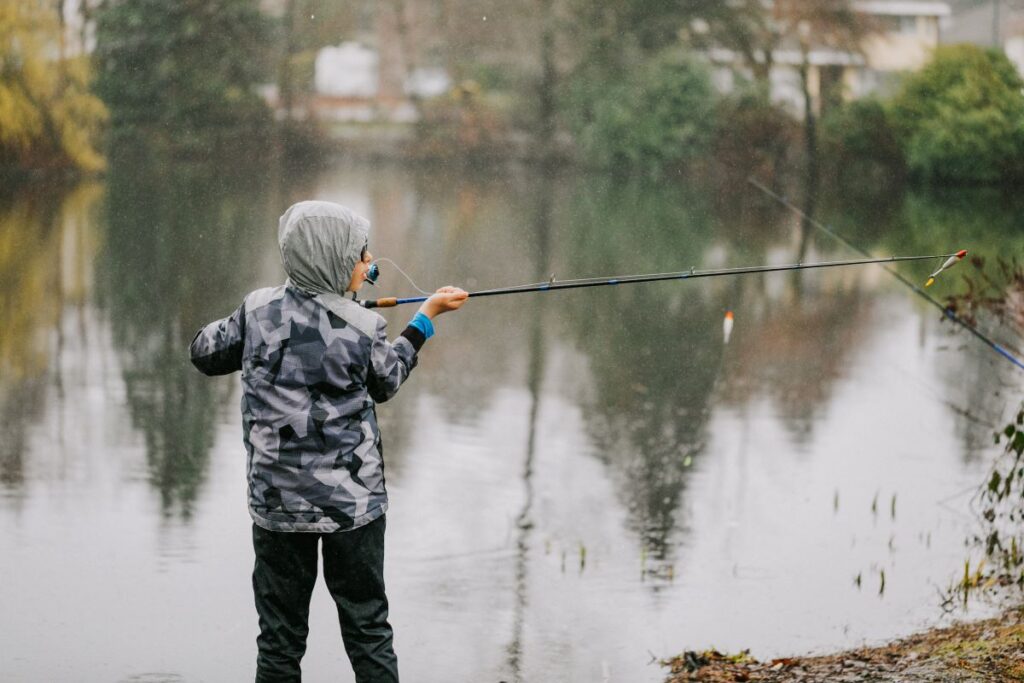Here are some simple and effective ways to set up your equipment for different types of fish and water conditions:
1. Still-fishing (mid-water)
This is a popular method for fishing shallow water, or in the spring and fall when fish are actively feeding in the middle or top of the water column. With this technique, natural or scented artificial bait is suspended at a chosen depth in the water using a fishing float. Use split-shot weights to sink the bait below the float. When a fish takes the bait, the float is pulled under, alerting the angler. Adjusting the distance from the float to the hook and bait allows you to place your lure at the depth where the fish are.
How to set up your rod for float fishing (mid-water):
- Pass your line through each of the guides on your rod.
- Clip a float on to your line. The amount of line below the float will depend on the depth you want to fish.
- Tie your hook directly to the main line with an improved clinch knot (see next page), or attach your hook – tied to a short leader – to a swivel attached to the mainline.
- Attach split-shot weights to the line at least 30 centimetres (one foot) above the hook. Add enough weight so that the float sits upright and low in the water.

2. Still-fishing (bottom)
Use this method for fishing deeper water during warm summer months, when fish are generally found near the bottom, or when targeting bottom-feeding fish like carp. Your weight will sit on the bottom. Try using a buoyant, scented artificial bait that floats just above the bottom, where it will be more visible to fish. Cast the weight and bait. After the weight sinks to the bottom, wind in any slack line until there is a taut connection between the weight and rod. Be sure to use enough weight to anchor the bait on the bottom.
How to set up your rod for bottom fishing:
- Pass your line through each of the guides on your rod.
- Attach a sliding weight so that it slides freely on the main line.
- Attach a hook and leader set-up to a swivel, then attach that to the main line below the sliding weight. Your leader should be 50 to 60 centimetres (1.5 to two feet) in length.
- Cast and test to see if the weight of the sinker will hold your bait in place near the bottom. If not, add more weight.

Quick tip: Knot-tying can be tricky, especially if you have cold fingers! Time spent tying knots while at the water also means you’re not fishing! To maximize your fishing time, pre-tie extra leaders onto several hooks or lures, and pack them along with you. Many tackle companies offer handy and inexpensive leader organizers.
3. Spoon or Spinner Fishing
Lures such as spoons or spinners tempt the fish to bite a moving target. Cast your lure, and allow it to sink to your desired depth. Keep your rod tip pointed down at the water, and retrieve the lure by reeling it in. The depth you are fishing will depend upon how long you allow the lure to sink, the weight of the lure, and the speed with which you retrieve it. Fish can be found in all parts of the water column; by varying your retrieval speed and fishing depth, you’ll cover all sections of the water, and improve your chances of a strike.
How to set up your rod for spoon or lure fishing:
- Pass your line through each of the guides on your rod.
- Use an improved clinch knot (see below) to attach a swivel to the end of your mainline.
- Attach a 50- to 60-centimetre leader to the swivel, and then tie on your chosen spoon or spinner.
- Adding weight just above the swivel will allow you to fish deeper in the water column.
Quick tip: If you see fish chasing your lure but not striking, stop winding, and allow your lure to flutter down for a moment or two – to resemble wounded prey – before reeling in again. This might goad a fish into striking what looks like an easy meal before it escapes.
For more tips on where to find fish and what species-specific techniques to use, read Fishing Techniques for Beginners.
